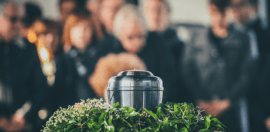The key to a resilient regional community

22 September 2021 at 5:07 pm
New research shows that communities must be front and centre of disaster relief plans
With natural disasters becoming more frequent and intense, new research finds that community organisations must be properly resourced and included as key players in managing a disaster if regional communities are to survive.
The three year project was led by the Foundation for Rural and Regional Renewal (FRRR), Resilience NSW, and University of Sydney. They worked with three communities across New South Wales impacted by and at risk of natural disasters to investigate, understand and measure the factors that helped and hindered individuals and communities in disaster resilience building.
A key finding of the research was that while community organisations, such as a Rotary Clubs or local catering groups, were nearly always the first on the scene of a natural disaster, it was rare for these groups to be included in any formal disaster response that emergency services carry out, or for them to receive help to build their capabilities before disasters hit.
Natalie Egleton, the CEO of FRRR, told Pro Bono News that with the frequency of disasters increasing, it was critical that these community organisations were well-funded and included in building resilience beforehand.
“Community groups tend to be the first responders because they are connected and know how to make things happen before emergency services arrive,” Egleton said.
“So what we’re looking at now is how you set up these structures and systems better beforehand so that when a disaster happens, community groups are more authorised and have got the resources to make a difference.”
Read more: Volunteers are critical to bushfire recovery, but it takes coordination
She said that more funding and support needed to be pumped into building leadership capabilities of community groups, and strengthening networks between the groups.
One example of a community leading disaster resilience is in the NSW community of North Richmond, which over the past few years has been impacted by severe fires and flooding.
In 2017, with funding support from FRRR, the community set up Street Connect to bring together local leaders to increase the awareness of natural disasters, connect residents to trusted local information sources, and ensure they have access to home emergency and evacuation kits.
“The group went around the neighborhoods and the streets, talking to people about their fire and flood preparedness… understanding what had happened before and what people’s experiences were,” Egleton said.
She said that because they had done this work beforehand, when the town was badly impacted by the 2019/20 summer bushfires they were better placed to deal with it
“Because North Richmond had the Street Connect model going and they had that local leadership base, they were able to mobilise and deploy people to help, and also be the trusted go-to group for emergency services and the council,” she said.
What do the researchers recommend?
- Communities must be in control of resilience building efforts, and should be regarded as equal contributors in disaster resilience work.
- Disaster resilience building needs to reflect the experiences of communities and recognise that preparedness, response and recovery are fluid, and sometimes simultaneous.
- The time between disasters is an ideal opportunity to engage communities in complex discussions and hear their ideas.
- Communities should contribute to and contextualise disaster information (outside of warnings and alerts) to local needs, building trust and ownership of information and communication.
- Community-led approaches are valuable, and must be matched with sustained cross-sector and cross-community investment, including recognising the value of community time, skill and effort.
- Resilience building programs and projects must be designed and implemented within a systems framework and acknowledge the complex array of relationships involved, and the time required.
- More work should be done to connect local community organisations in supporting sustained resilience building.
Resources are going to waste
Egleton said that by not tapping into local knowledge, valuable resources and public donations were going to waste.
For instance, in disaster-affected towns with large ageing populations, pallets of nappies were being dropped off.
“If we were tapping into that local knowledge and community groups were put in charge of handling donations, communities would actually be getting what they needed,” she said.
With the time between disasters shrinking, she said that giving communities the power to come up with their own tailored and sustainable solutions was the difference between a town surviving or falling apart.
“The reality is that if we keep on going the way we are, those communities will be completely overwhelmed and people won’t be able to stay there,” Egleton said.
“If we do things differently… we can help them to be more in control of what’s happening in their region… to support long-term change rather than knee-jerk reactions whenever we are experiencing a disaster.”
You can read a full copy of the report here.







